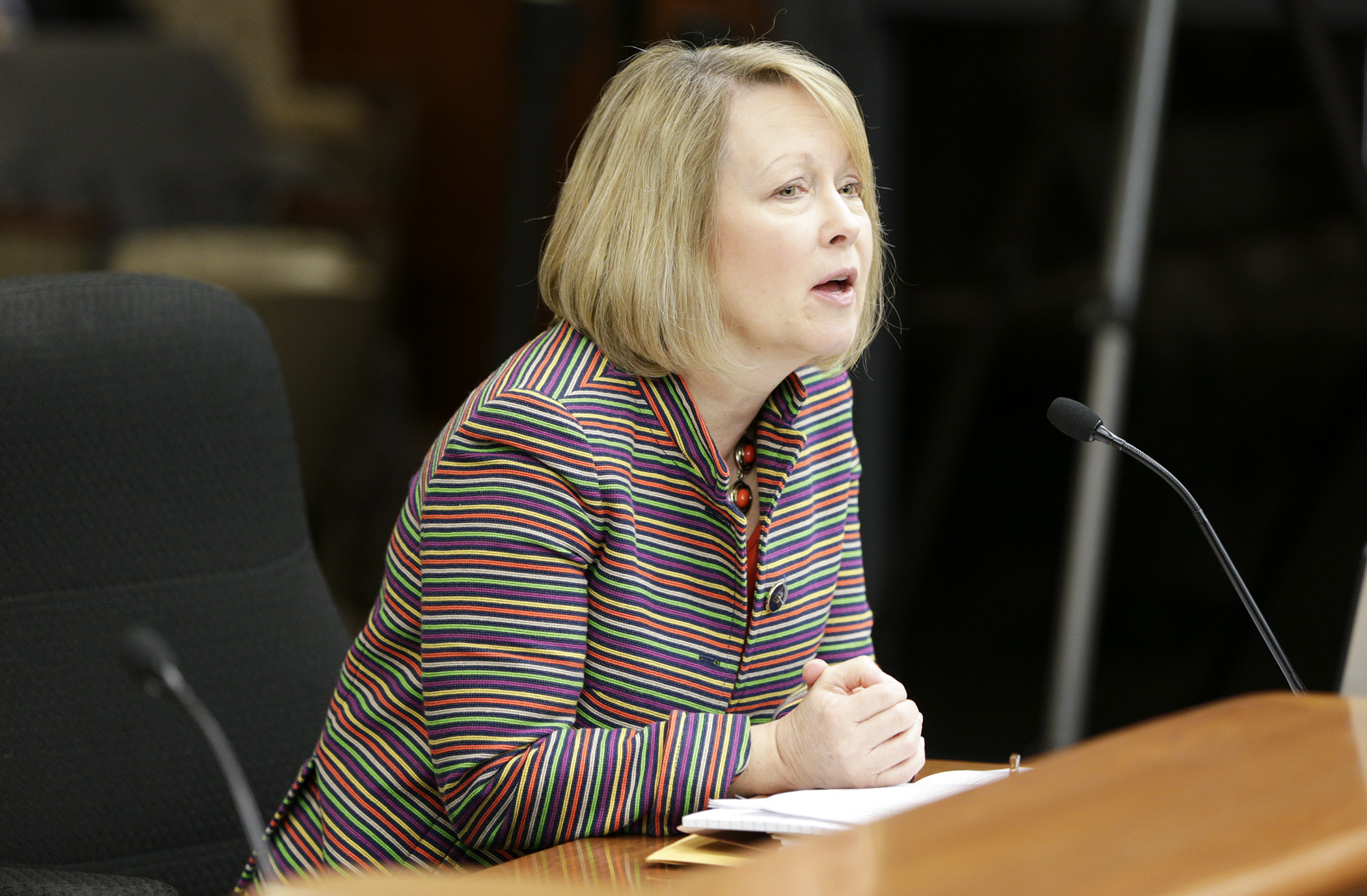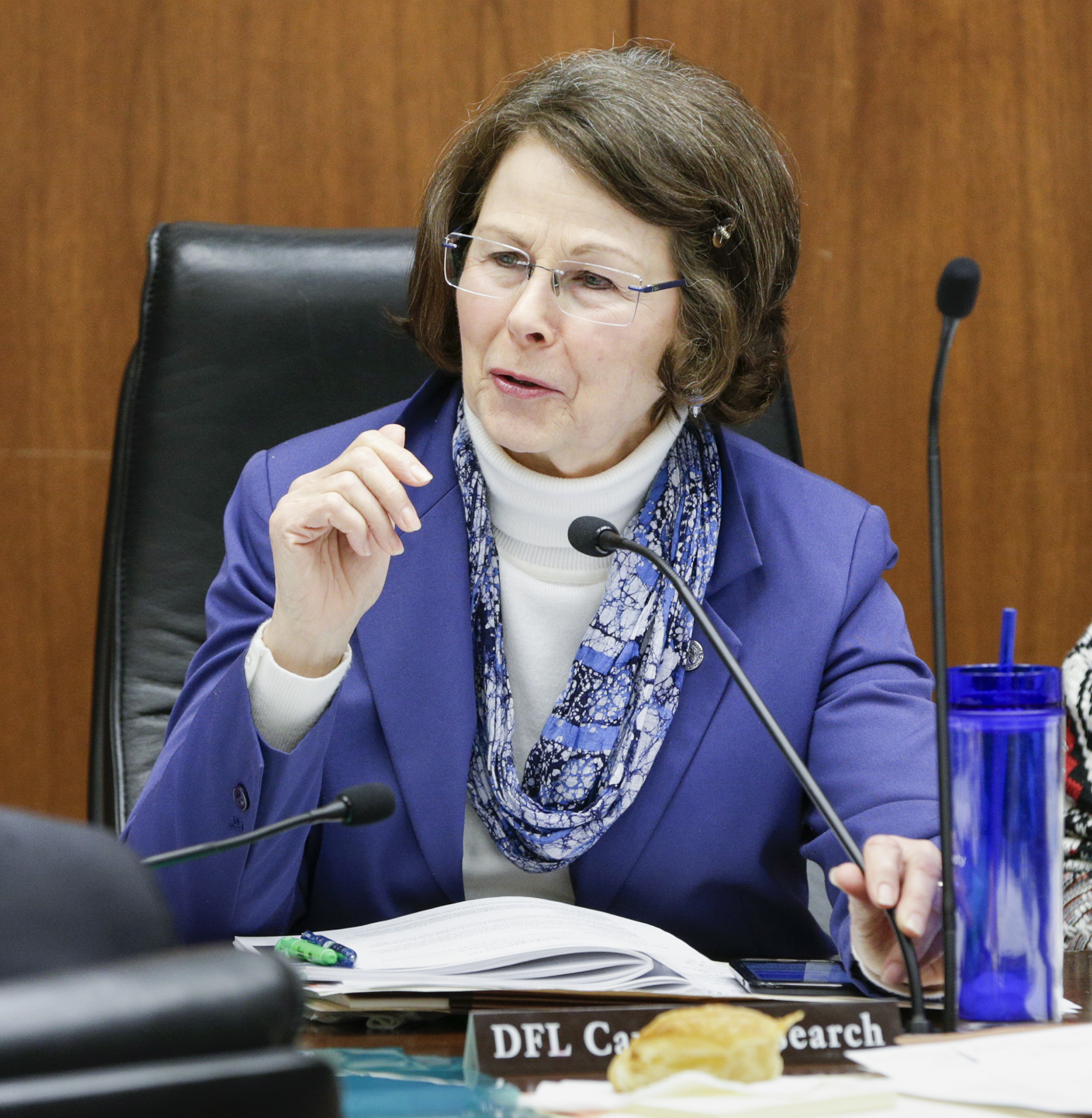Perpich, Crosswinds closures approved by House education committee
The Perpich Center for Arts Education and accompanying Crosswinds Arts and Science School have faced their share of problems over the years.
A scathing program evaluation and financial audit by the Office of the Legislative Auditor earlier this session found its leaders have been ineffective, unorganized and uncommunicative in many areas.
“It’s certainly a very sobering report; very concerning, hard facts,” said Rep. Jenifer Loon (R-Eden Prairie), who sponsors HF1825.
 Rep. Jenifer Loon comments during Friday’s House Education Innovation Policy Committee discussion of her bill, HF1825, which would abolish the Perpich Center for Arts Education. Photo by Paul Battaglia
Rep. Jenifer Loon comments during Friday’s House Education Innovation Policy Committee discussion of her bill, HF1825, which would abolish the Perpich Center for Arts Education. Photo by Paul BattagliaThe report offered several recommendations to provide transparent oversight and invite greater public input.
But there remains another option for legislators to consider: cut the losses and call it a day.
Loon’s bill would do just that – abolishing both schools, while also establishing a new arts education specialist position within the Department of Education that would offer resource services to enhance arts education opportunities in school districts across the state.
Approved 9-6 Friday by the House Education Innovation Policy Committee on a roll-call vote, it now heads to the House Education Finance Committee. There is no Senate companion.
Under the proposal, by Jan. 15, 2018, Perpich Center officials would submit to the Legislature a plan to convey its property to another school district or nonprofit institution.
The Perpich Arts Library would be transferred to the State Library Services Division, while St. Paul Public Schools has expressed interest in acquiring the Crosswinds school in Woodbury, according to Deputy Legislative Auditor Judy Randall. There is no current plan for the center’s Golden Valley campus.
“I’m a strong proponent of the arts. Making sure students have opportunity to pursue their talents is vitally important,” Loon said. “But as I look at how the Perpich Center was created, I don’t feel it was crafted to be destined for success. While this may seem harsh to some, it’s a conversation and a proposal that needs to be put on the table.”
Careful consideration
The bill is the result of issues that have been considered for years.
Testifiers against abolishing the schools — an action that would effectively disperse hundreds of students to new school districts and lay off 113 full- and part-time staff — expressed concerns with the proposal.
They contend a change is on the horizon, and caution not to pull the plug quite yet.
“Many of the current board did not contribute to any of the negative findings, and key recommendations are being addressed and implemented,” said Julie Workman, Perpich Center board vice chair. “We are asking for time to rectify these long-standing deficits before taking any potential action.”
“Perpich has to evolve; changes have rendered it not obsolete, but indispensable,” said Ahava Silkey-Jones, the center’s principal. ”It has struggled as of late, but it isn’t lost. We are ready to evolve, grow, and change as needed to serve our students.”
 Rep. JoAnn Ward speaks in favor of continuing the Perpich Center for Arts Education during Friday’s House Education Innovation Policy Committee discussion of bill that would, in part, abolish the center. Photo by Paul Battaglia
Rep. JoAnn Ward speaks in favor of continuing the Perpich Center for Arts Education during Friday’s House Education Innovation Policy Committee discussion of bill that would, in part, abolish the center. Photo by Paul BattagliaBut Loon contends that since the center’s inception students now have more opportunities to pursue arts education through expanded charter and private school access. Aside from mismanagement, the schools aren’t needed anymore, she says.
“I just don’t feel it’s a model that bodes well for success,” she said. “I think it’s a flawed model, but I am open to ideas, amendments and thoughts as to what comes next.”
“I think it’s presumptuous of us to legislate this conclusion,” said Rep. JoAnn Ward (DFL-Woodbury). “This bill shuts down any alternatives by closing off this state asset with no replacement. There are better ways to address the challenges.”
Perpetual problems
Rep. Randy Jessup (R-Shoreview) saw the writing on the wall at a House Education Innovation Policy Committee meeting earlier this month. “From a business perspective, perhaps the appropriate next step is to gracefully wind down these two schools and allow students to pursue other options. Sometimes businesses just die. Maybe it’s time.”
Created by the Legislature in 1985 the center has a mission of promoting the talent and creativity of K-12 students through arts education.
However, attendance has been an issue.
At its Golden Valley location, the center is statutorily limited to 310 students. After peaking at 306 students in 2011, enrollment is 187 this year. At Crosswinds school, attendance has dropped from 349 students in 2012 to 129 this year.
It’s also pricey to teach the enrolled students, costing $20,000 per student (more than $21,000 with food and dorm expenditures) per year compared to $11,000 per public school students.
The majority of its funding comes from the state, including nearly $14 million of its $21.9 million spent in Fiscal Years 2014 and 2015.
Related Articles
Search Session Daily
Advanced Search OptionsPriority Dailies
Ways and Means Committee OKs proposed $512 million supplemental budget on party-line vote
By Mike Cook Meeting more needs or fiscal irresponsibility is one way to sum up the differences among the two parties on a supplemental spending package a year after a $72 billion state budg...
Meeting more needs or fiscal irresponsibility is one way to sum up the differences among the two parties on a supplemental spending package a year after a $72 billion state budg...
Minnesota’s projected budget surplus balloons to $3.7 billion, but fiscal pressure still looms
By Rob Hubbard Just as Minnesota has experienced a warmer winter than usual, so has the state’s budget outlook warmed over the past few months.
On Thursday, Minnesota Management and Budget...
Just as Minnesota has experienced a warmer winter than usual, so has the state’s budget outlook warmed over the past few months.
On Thursday, Minnesota Management and Budget...